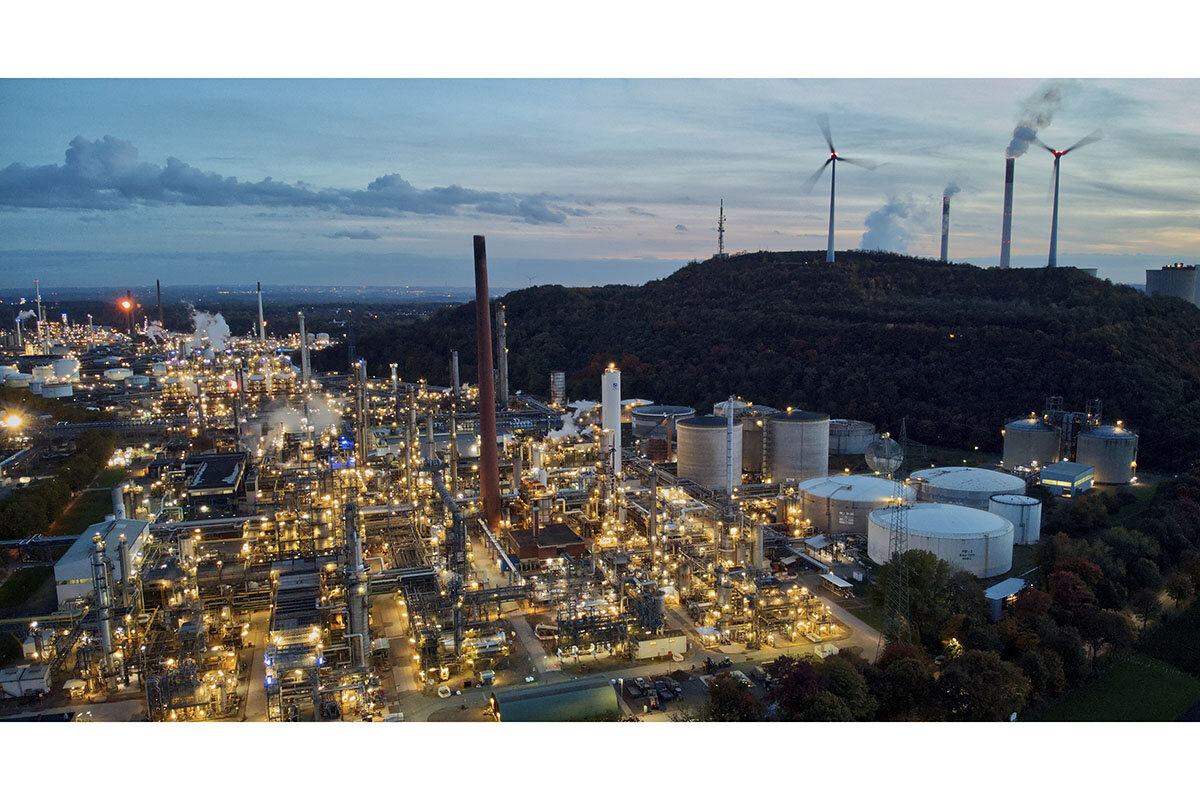On climate change targets, can success be relative?
Loading...
| London
We’re just days away from the most important climate conference since the landmark Paris Agreement of 2015, and it is confronting world leaders with two very different challenges.
One is dominating the pre-conference headlines. It is the urgent need for governments to rediscover their will, and reaffirm their wavering commitment, to prevent a climate emergency from escalating into a climate catastrophe.
A United Nations report last week spoke of a “wasted year” since last year’s climate conference, lamenting the “negligible” progress toward bringing down harmful emissions as most governments focused on the economic and energy repercussions of the Ukraine war.
Why We Wrote This
A story focused onAs the world’s chances of meeting its climate targets seem to recede, some experts suggest stepping away from an all-or-nothing approach to the 1.5 degrees Celsius ceiling agreed to seven years ago.
The title of the U.N. Environment Program report – “The Closing Window” – captured its message. Without “system-wide transformation,” it warned, there was no longer a “credible pathway” to meeting the Paris target of keeping the Earth’s temperature to 1.5 degrees Celsius (2.7 degrees Fahrenheit) above preindustrial levels.
That is the point, according to the scientific consensus, at which the already punishing effects of climate change would risk becoming dangerously and irreversibly worse.
This is where the second challenge comes in. It has made few, if any, headlines, but it could prove critical to reigniting progress.
It involves not just a change in policy, but a fundamental shift in mindset: an ability to think analog, not digital or binary.
Where climate change is concerned, that would mean moving away from an all-or-nothing, success-or-failure focus on the 1.5 C. target, toward recognition that every tenth of every degree on either side of it makes a real-world difference: to the number of plains parched or flooded, villages incinerated or washed away, lives blighted or lost.
The evidence has been getting starker. Though our planet is still roughly 0.4 C below the Paris target, increasingly frequent “extreme events” have been destroying woodland with wildfires, inundating plains, expanding deserts, and buffeting waterfront towns and cities worldwide.
An “analog” approach would not ignore the 1.5 C target, but it would not regard it as the only measure of climate policy success.
It would recognize that even if the window on 1.5 C does close, there’s a huge difference between capping our planet’s temperature increase at 1.6 C or 1.7 C above preindustrial levels, and the 2.4 C to 2.8 C range currently projected by the U.N. Environment Program.
And another major report issued last week did offer encouragement that those higher temperature rises, at least, could yet be averted.
It came from the International Energy Agency, and suggested that recent Ukraine-related spikes in the use of high-emissions fuel like coal are likely to prove temporary, with many governments instead reacting to the war by prioritizing investments in cleaner energy.
The IEA foresees world demand for all fossil fuels peaking fairly soon: coal within the next few years, natural gas by 2030, and oil a few years after that. By contrast, annual investment in clean energy is set to rise from $1.3 trillion today to more than $2 trillion by the end of this decade.
The rub? Even that level of investment would not put the world on course to meet the 1.5 C target. Double that figure – $4 trillion a year by 2030 – would be required, according to IEA Executive Director Fatih Birol.
Still, the underlying assumption of both of last week’s reports remained that with sufficient financial and political will, the target could still be reached – that while the window was closing, it wasn’t yet fully shut.
That is the message the reports’ authors hope will get through to the delegates of the nearly 200 nations convening for next week’s COP27 conference in Egypt’s Red Sea resort of Sharm el-Sheikh – especially given the loss of momentum since last year’s meeting in Glasgow, Scotland.
At the same time, they appear to acknowledge the demotivating downside of thinking too digitally – of defining climate action success by the binary measure of a 1.5 C target which, U.N. Environment Program Executive Director Inger Andersen warned, currently seems “a tall, and some would say impossible, task.”
“We must try,” she said. “Every fraction of a degree matters. We must strive to get as close as possible.”
In other words, the Paris target is achievable. It must be achieved. But at the same time, the world should keep other goals in mind and remember the importance of restraining any temperature rises above the target as much as possible.
It’s an approach that seems to echo an oft-quoted observation by one of America’s most celebrated authors, from an age before climate change had begun to figure on the world agenda.
“The test of a first-rate intelligence,” wrote F. Scott Fitzgerald, “is the ability to hold two opposed ideas in the mind at the same time, and still retain the ability to function.
“One should, for example, be able to see that things are hopeless and yet be determined to make them otherwise.”








